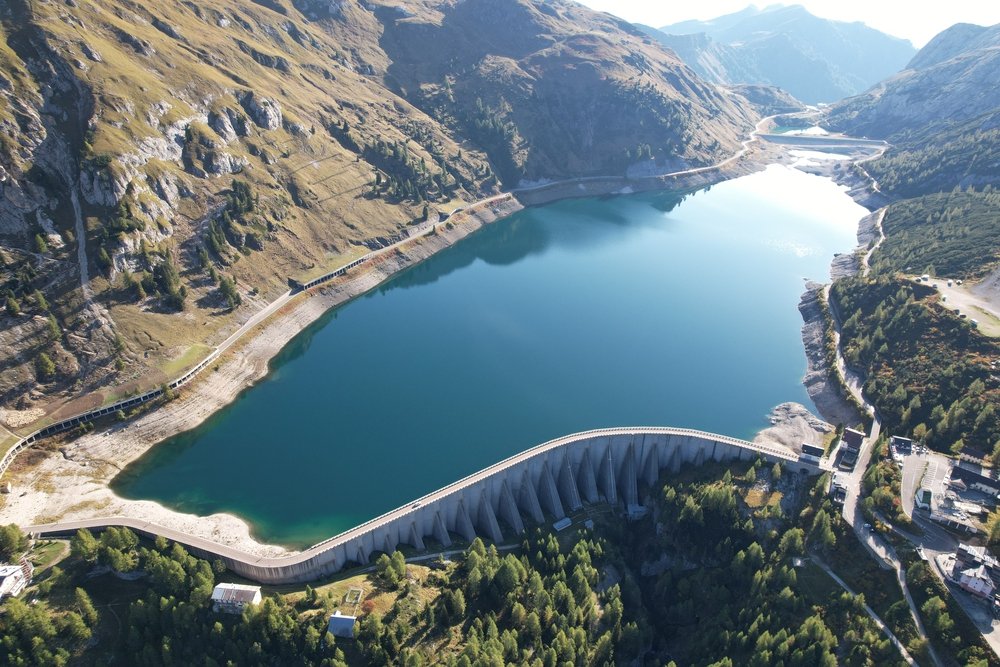10 Diverse Examples Of Surface Water In Different Scales
Surface water is a critical component of our planet's ecosystems, playing a vital role in supporting life and shaping our landscapes. From vast oceans to tiny ponds, surface water exists in a multitude of forms, each with its unique characteristics and significance. In this publication, with insights from Divirod, a leading water data analytics solutions provider, we'll look at diverse examples of surface water in different scales, highlighting the beauty and importance of these aquatic ecosystems.
Oceans: The Vast Water Worlds
The Earth's oceans cover approximately 71% of the planet's surface, making them the largest and most significant example of surface water. Oceans are teeming with life, from the smallest plankton to enormous whales, and they play a crucial role in regulating our climate by absorbing and distributing heat. They also support global commerce and are a source of inspiration and exploration for humans.
Seas and Gulfs: Diverse Coastal Waters
Seas and gulfs are smaller bodies of saltwater connected to the oceans. They vary in size and characteristics, from the Mediterranean Sea to the Gulf of Mexico. These coastal waters are home to unique ecosystems and are essential for fisheries and tourism. They provide habitats for countless species of marine life and offer recreational opportunities for people worldwide.
Lakes: Inland Water Reservoirs
Lakes are prominent examples of surface water found on every continent. They range from small, secluded ponds to vast expanses like the Great Lakes in North America. Lakes are crucial for freshwater storage and provide drinking water, irrigation, and recreational activities. They also support diverse ecosystems, often hosting fish, birds, and aquatic plants.
Rivers: Flowing Lifelines
Rivers are dynamic and interconnected systems of flowing surface water. They originate from various sources, including mountain springs, glaciers, and rainfall. Rivers play a pivotal role in transporting nutrients, sediments, and freshwater to various ecosystems, making them essential for agriculture, navigation, and habitat maintenance. The Amazon River, for instance, is the world's largest river and a biodiversity hotspot.
Streams and Creeks: Tiny Waterways
Streams and creeks are smaller versions of rivers, often found in hilly or mountainous regions. They contribute to the overall health of river systems by supplying freshwater and nutrients. These narrow waterways are also crucial breeding grounds for various aquatic species, including trout and amphibians.
Estuaries: Where Freshwater Meets the Sea
Estuaries are distinct and highly productive ecosystems where the freshwater flowing from rivers and streams mingles with the saltwater of the ocean. These brackish waters provide essential nurseries for many marine species, including fish and crustaceans. Chesapeake Bay in the United States is one of the largest and most renowned estuaries globally, supporting a diverse array of life.
Ponds: Small Aquatic Microcosms
Ponds are small, shallow bodies of freshwater often found in parks, gardens, and natural settings. These miniature ecosystems are home to an incredible variety of life, from frogs and dragonflies to algae and small fish. Ponds are essential for local biodiversity and serve as educational tools, allowing us to observe nature up close.
Wetlands: Nature's Water Filters
Wetlands are areas where the land is saturated with water, creating a unique environment that supports both aquatic and terrestrial life. They act as natural filters, purifying water by trapping sediments and removing pollutants. Wetlands are crucial for flood control, water purification, and the conservation of countless species. The Florida Everglades and the Okavango Delta in Africa are prime examples of diverse wetland ecosystems.
Reservoirs: Human-Created Water Bodies
Reservoirs are artificial lakes created by damming rivers for various purposes, such as water supply, hydropower generation, and flood control. While they serve essential human needs, they can also impact the environment by altering natural river ecosystems and habitats. The Hoover Dam and its reservoir, Lake Mead, are iconic examples of human-engineered surface water systems.
Puddles: Tiny Temporary Ponds
Puddles are small, temporary accumulations of rainwater commonly seen after a downpour. While they may seem insignificant, these tiny surface water bodies provide a lifeline for small organisms and serve as breeding grounds for insects. Even in their transitory nature, puddles play a role in the broader ecosystem, showcasing the resilience and adaptability of life.
Appreciating the Varied Beauty of Surface Water
Surface water comes in a multitude of forms and scales, each with its unique ecological, cultural, and economic significance. Extensive knowledge about surface water is helpful when it comes to inland water and flood management. From the vastness of oceans to the intimacy of puddles, these examples of surface water are essential for the sustenance of life on Earth. As stewards of our planet, we must continue to protect and conserve these precious aquatic ecosystems for future generations to enjoy and benefit from.
Surface water examples, as showcased in this article, highlight the interconnectedness of all life on Earth and the delicate balance required to maintain healthy aquatic ecosystems. Whether it's the majestic oceans or the tiny puddles outside your door, surface water plays an essential role in our daily lives, reminding us of the beauty and importance of our planet's aquatic treasures.


